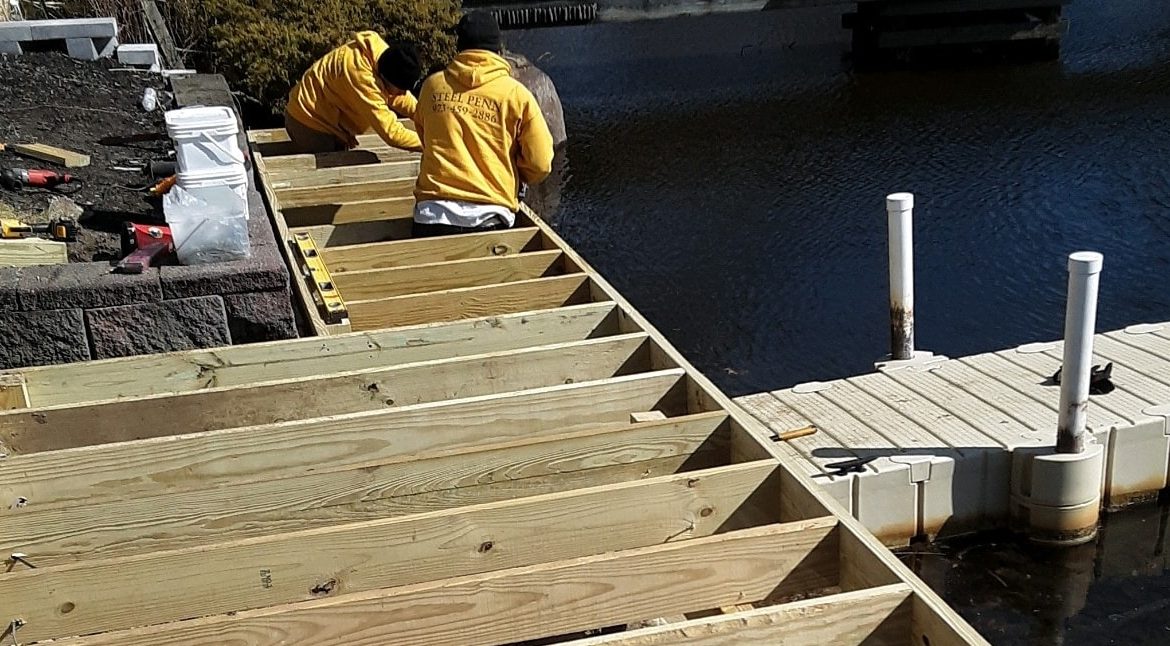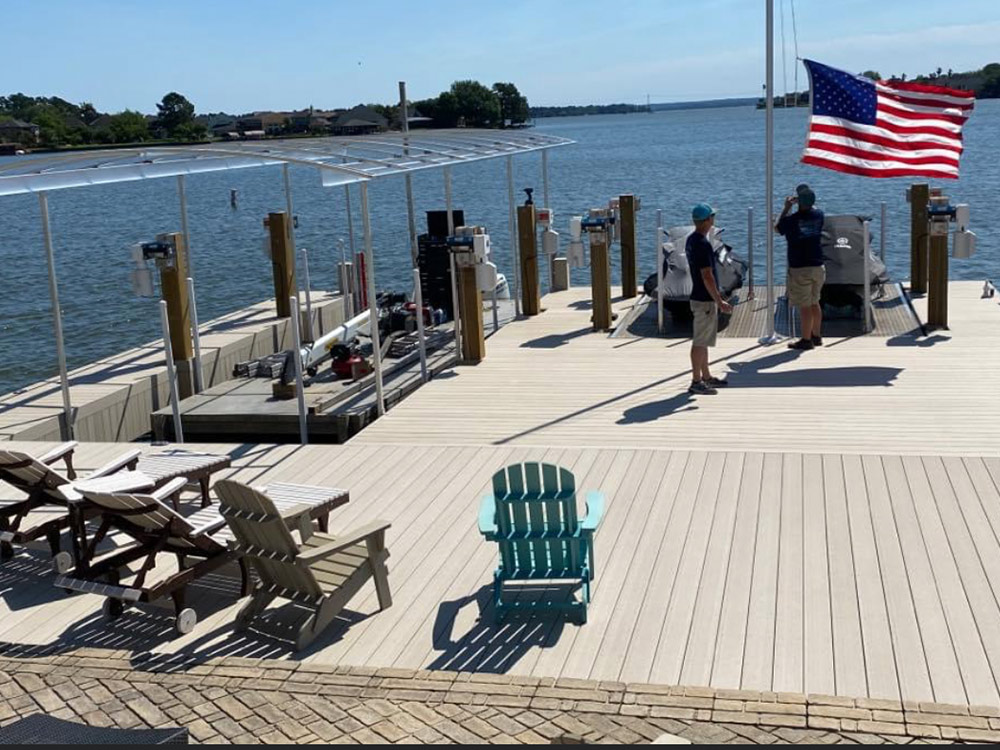The Relevance of Timely Dock Repairs for Waterfront Safety
The Relevance of Timely Dock Repairs for Waterfront Safety
Blog Article
How to Address Common Dock Fixing Issues for Safe Water Activities

Identifying Common Dock Issues
Identifying typical dock problems is crucial for keeping the functionality and safety of your waterside residential property. Regular inspections can help discover issues prior to they come to be serious, guaranteeing both the durability of the dock and the safety of those who use it. One widespread concern is corroded or loosened bolts. Over time, screws, bolts, and various other bolts can become loosened because of consistent exposure to water and climate aspects, resulting in structural instability.
One more common problem is the destruction of flotation tools. These gadgets are necessary for maintaining the dock buoyant, and any damages or slits can create the dock to listing or sink. On a regular basis checking for leakages or waterlogged drifts can preempt more substantial concerns.
Additionally, algae and barnacle build-up on the dock's surface area can produce harmful and slippery problems. This biofouling not only presents a risk to individuals however can also accelerate the wear and tear of the dock materials.
Last but not least, evaluating for indications of rust on steel components is important. Rust can jeopardize the honesty of the dock's framework, making it dangerous. By consistently identifying these common dock concerns, you can guarantee that your dock stays useful and secure for several years to find.
Repairing Rotting Wood
When dealing with the concern of rotting timber on your dock, it is crucial to act swiftly to stop more wear and tear. Begin by extensively evaluating the whole structure to determine all influenced locations. Make use of a screwdriver to probe the timber; if it sinks in easily, the timber is most likely rotted and requires prompt interest.
When determined, eliminate the decomposed areas utilizing a saw or carve. Be sure to cut down to healthy and balanced, strong timber, guaranteeing you get rid of all endangered product. After removal, deal with the staying timber with a timber preservative to avoid future rot. This therapy will assist protect against moisture, which is the main root cause of timber decay.
Following, replace the removed areas with marine-grade lumber or pressure-treated wood, which are more immune to water damages. Safeguard the brand-new items with galvanized or stainless-steel bolts to stop deterioration. In addition, using a waterproof sealer to the brand-new wood can provide an extra layer of protection.
Protecting Loose Boards
Exactly how do you ensure your dock continues to be practical and safe for all its customers? One essential facet is safeguarding loosened boards, which can or else position substantial hazards. Loose boards not only boost the danger of stumbling yet can additionally endanger the structural stability of the entire dock.

For reinstallation, utilize stainless or galvanized steel screws, as these materials supply exceptional resistance to rust in marine atmospheres. Ensure the screws are long sufficient to penetrate deep right into the underlying support structure, but not as long that they protrude through the dock's surface. Pre-drilling pilot holes can aid stop the timber from splitting.
Lastly, maintain a normal evaluation schedule to identify and address any new concerns promptly. By safeguarding loose boards properly, you add to the general safety and longevity of your dock, making it a reputable platform for water activities.
Maintaining Unstable Pilings
Making certain the security of unsteady pilings is vital to preserving a useful and risk-free dock. Unstable pilings can jeopardize the entire framework, presenting considerable risks to users and possibly causing expensive fixings. The initial step in supporting these important elements is a detailed inspection. Check out the pilings for indications of rot, damages, or changing. Use a level to look for upright positioning and guarantee they are driven deep enough into the substratum to give appropriate assistance.
If the pilings are located to be unpredictable, visit this site right here one effective technique for support is the usage of added bracing. Cross-bracing with dealt with lumber or galvanized steel can substantially enhance stability. Anchor the braces safely to both the pilings and the dock structure to distribute tons uniformly.

Routine maintenance and routine review of the pilings' security are important to making certain long-term dock safety and security and functionality.
Changing Rusty Equipment
Dealing with unsteady pilings is simply one facet of preserving a dock's integrity; another essential worry is replacing rusty hardware. With time, exposure to wetness and salt can bring about the oxidation and rust of bolts, screws, and braces, jeopardizing the whole framework's security. Routine assessment for rust is essential, specifically after serious climate or seasonal adjustments.
When rusty hardware is identified, immediate action is required. Begin by choosing marine-grade stainless steel or galvanized hardware, both developed to resist the harsh aquatic atmosphere. Ensure that you have the suitable devices, such as wrenches and screwdrivers, to safely remove the old, corroded pieces without causing more damage to the dock.
After removing the rusty equipment, thoroughly tidy the impacted locations to eliminate any recurring rust or debris. Apply a rust-inhibiting primer to revealed metal surfaces before mounting the brand-new equipment. Tighten up all components firmly to avoid future loosening, and occasionally inspect the installations to make certain recurring security.
Changing rustic hardware not just extends the dock's life-span but also dramatically improves the safety of water tasks. By proactively handling rust, you protect both the framework and its customers, ensuring a pleasurable and protected waterside experience.
Conclusion
Regular evaluations and maintenance are essential to resolve common dock repair issues and ensure secure water tasks. Such positive procedures contribute to the general safety and security and performance of dock structures, cultivating a safe and secure atmosphere for water-based activities.
Making certain the safety and security of water tasks hinges dramatically on the appropriate upkeep and fixing of anchors (Dock Repairs). These tools are crucial for maintaining the dock resilient, and any see page damage or punctures can cause the dock to checklist or sink. By regularly determining these usual dock issues, you can make sure that your dock continues to be functional and protected for years to come
Ensuring the stability of unstable pilings is paramount to keeping a practical and risk-free dock.Normal evaluations and maintenance are vital to attend to usual dock repair service issues and make sure secure water tasks.
Report this page